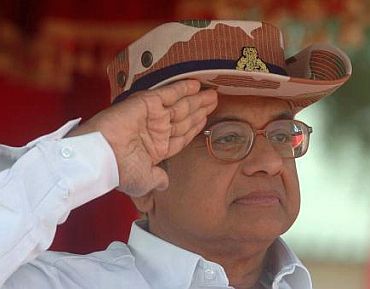
If we wish to deter a future attack like 26/11, we must publicly state our possible response in advance and implement it resolutely in case of attack, says (retd) Colonel Dr Anil Athale
As we remember those horrific events of attacks on Mumbai two years ago, there is good news and bad news.
But the good news first! Under Union Home Minister P Chidambaram's guidance, vigorous effort has been made to form a National Investigation Agency dealing exclusively with issues related to terrorism and several regional hubs have been established for the National Security Guard.
This to some extent will ensure that there is a central agency to whet intelligence inputs and also a quicker response to any future attack. The Maharashtra Police have created a dedicated counter terror force, which is well equipped so that in future the police will at least be equal to terrorists in sophisticated arms and equipment.
At the strategic level, India's doctrine of 'Cold Start', if in place, has put Pakistan on notice that it cannot take future Indian restraint for granted. Thanks to the news of daily bloodbath and attacks on mosques and imambaras in Pakistan, sympathy for the terrorist's 'cause' has more or less evaporated.
The terrorists will find it difficult to find local support in future. Does it mean that another Mumbai 26/11 will not take place in future? Unfortunately answer to this is resounding NO!
...

The threat of a similar or even more devastating attack is still very much alive.
It must be noted that most of the above measures are essentially passive and defensive measures that more or less assume that an attack will take place. There is as yet no effective preventive/pre-emptive or 'deterrent' strategy in place.
The Lashkar-e-Tayiba, the Pakistani terrorist organisation that carried out this operation, continues to function in Pakistan under different names.
The nexus between the Lashkar and the Pakistani army (through the Inter Services Intelligence) continues as before.
We had the US Secretary of State Hillary Clinton recently acknowledging this fact by saying that the Pakistan Army regards the LeT as a hedge against the Indian threat. The David Headley (LeT operative arrested in Chicago) confessions have clearly brought out this nexus in the open. As yet there are no indications that Pakistan has given up its policy of using terrorism as instrument of state policy against India.

26/11: Some unanswered questions
One does not wish to follow a former Union minister or a former police officer who raised the false spectre of police officers Hemant Karkare, Vijay Salaskar and Ashok Kamte being killed by 'unknown' persons.
Such conspiracy theories even say that the lone terrorist caught was not 'really' involved (despite videos of CST railway station).
With the testimony of the wounded police constable in that ill-fated police Qualis vehicle being an eyewitness, these theories need to be trashed. But there are still some unanswered questions that need clarification.
The first and foremost is the 'mystery' of the terrorists ability to keep firing and fighting for close to 60 hours! As any military man would know that the AK-47s that terrorists used are ammunition guzzlers, it fires 600 rounds per minute. To keep firing for over 60 hours, even intermittently, would have needed huge quantities of ammunition running into few thousands of rounds.
How did the terrorists carry this much ammunition in their small rucksacks?
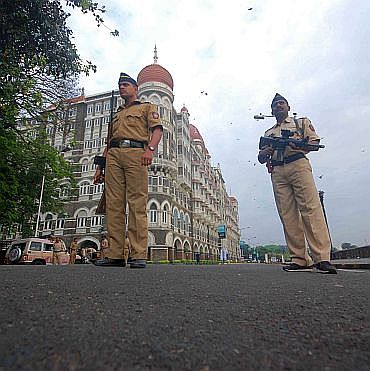
Was ammunition stockpiled before at the Taj hotel? We have evidence that David Headley stayed at the Taj earlier in the year. Could he have deposited this earlier with local help? Then there is the mystery of an explosive package found at his ex-girlfriend's bakery!
The second unanswered question is the ease with which the terrorists found taxis to move around. The taxi drivers, both of whom were blown up later, did not suspect wrongdoing even after they heard of the firing?
The widow of one of these doubtful taxi drivers actually received compensation and even met the American President at the Taj recently as a 'victim' of terrorism.
Counter terror: Still work in progress
One of the biggest lessons of 26/11 ought to have been failure of leadership at the political, bureaucratic, police and armed forces level. Multiplicity of commanders and ego clashes made sure that despite very conspicuous bravery by many policemen and soldiers, the response to terror attack was haphazard.
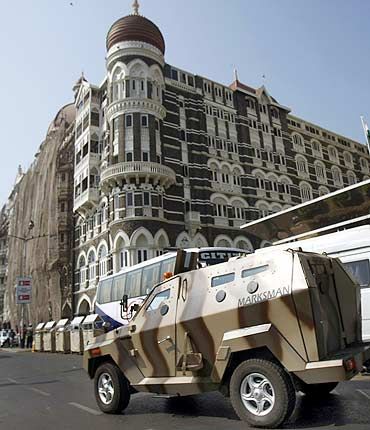
The resources available locally were not utilised and there was delay, the syndrome of 'passing the buck' was evidenced. Even the brave high-ranking police officers who died were essentially victims of kneejerk reactions.
There is a crying need to appoint a single commander in advance.
One is aware that this is a major departure from usual practice, but even armed forces, NSG and all else must come under a single commander once a designated authority (say DGP of state or home minister) declares an incident as 'terrorist incident'.
It will be most appropriate to appoint a local police officer to this post as a kind of city czar of counter terror. The reason for this is that local knowledge can be crucial in these cases and only the police have that kind of expertise.
Rank, cadre et al should be discarded in this case. One is reminded of a basic infantry teaching in this context. Many times a mixed patrol of infantry, gunners, engineers et al is launched during war.

The teaching in this case is that irrespective of rank, it is the infantry man who is the commander. The same logic should apply in this case. One only hopes that this crucial issue of who will control the operations has been sorted out soonest.
The second and possibly more important issue that needs to be highlighted is that to fight terrorism effectively, we must develop ability to detect, disrupt and neutralise potential terror plots before they are launched.
Here one would draw attention to several instances in UK and the US where the Federal Bureau of Investigation has actively lured potential terrorists into traps.
These then are speedily arrested and sentenced under a stringent law. There is really no substitute to a special law to deal with terror plots.
We have an eminent lawyer as our home minister, who can surely design an appropriate law that would empower his NIA to accomplish this task without jeopardising the human rights and freedoms of our citizens. Else the NIA would remain like a doctor who cannot save the patient and only specialises in 'post mortems'.
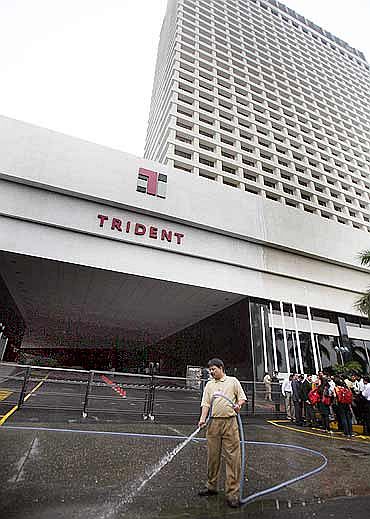
Finally is the issue of how to 'compel' Pakistan to act against the terror groups based there.
This is different than 'deterrence' and involves action and not merely threat of an action. The doctrine of Cold Start is a good step but poses the problem of our lack of preponderant military power over Pakistan.
When many Indians lament as to why we do not follow the Israeli example of retaliation, they forget that we do not have that kind of battlefield superiority over our adversary as Israel has in the Middle East.
This is a challenge to out our scientific establishment. This problem is further complicated due to Uncle Sam's generosity in gifting weapons to Pak and China's proclivity to fish in troubled waters.
Finally, we have a terrible tendency to fight past battles on terror front.
So after blasts in local trains in Mumbai, we install CCTVs at railway stations. After 26/11, all hotels are treated as targets.
We forget that like lightening, terrorists seldom strike at the same place twice! There is a real possibility that next time round the terrorists may choose a very different target, say a small town or an industrial plant (one does not wish to elaborate further).
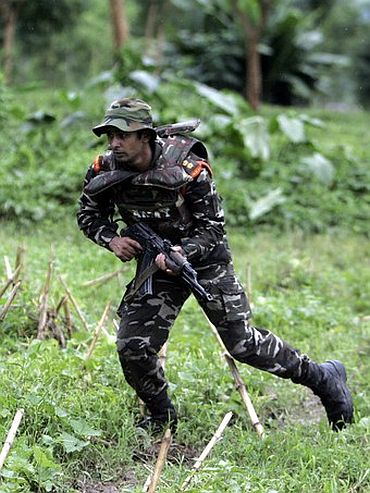
In all such cases the immediate response is crucial. This can be ensured by building up the 'Ghatak' platoons of all infantry battalions to the level of the NSG. These commando platoons can become part of local counter-terror plan in co-operation with local police.
At any given time we have several army battalions in peace stations and thus a widely dispersed anti-terror force would become available to the country. Like the aid to civil authority plans, these should be permanent feature of our country.
It is good that the prime minister has finally made up his mind that terror and talks do not go together. We have to also fashion an 'incremental punishment' strategy encompassing all means to deal with the possible threat of escalation.
In any case in case of future attack, do nothing is not an option. If we wish to deter a future attack, we must publicly state our possible response in advance and implement it resolutely in case of attack. We owe it to the victims of 26/11.